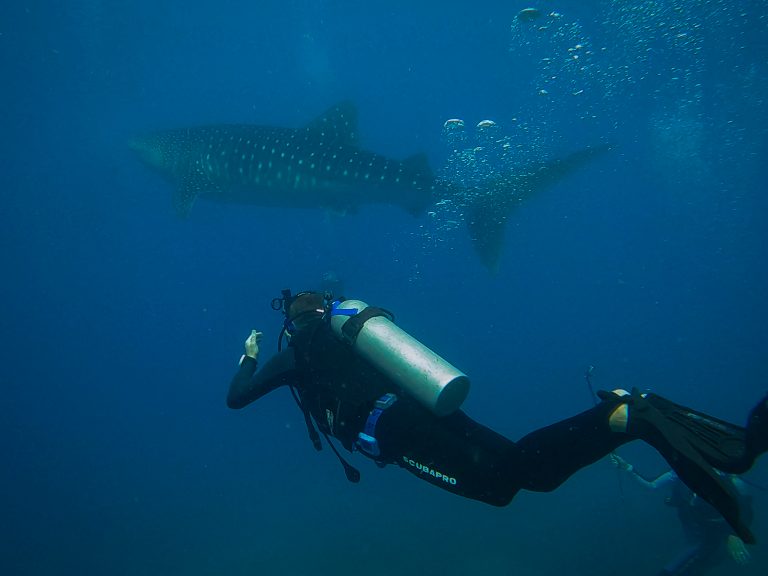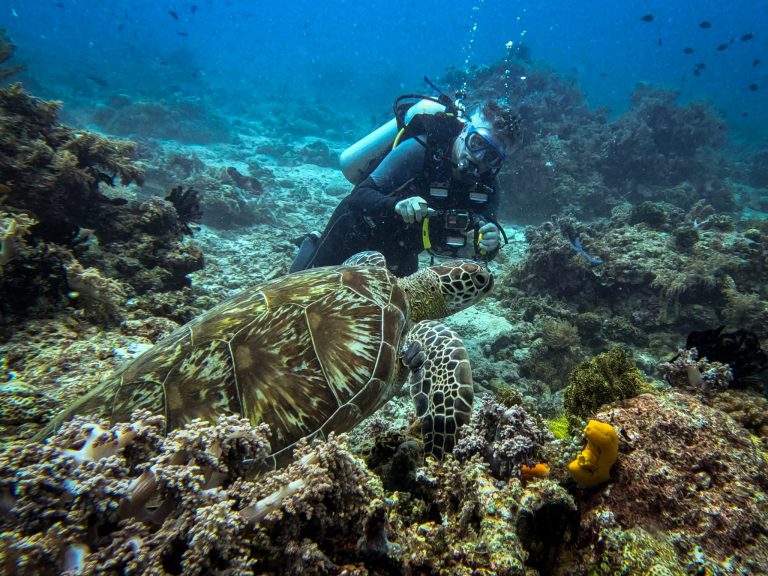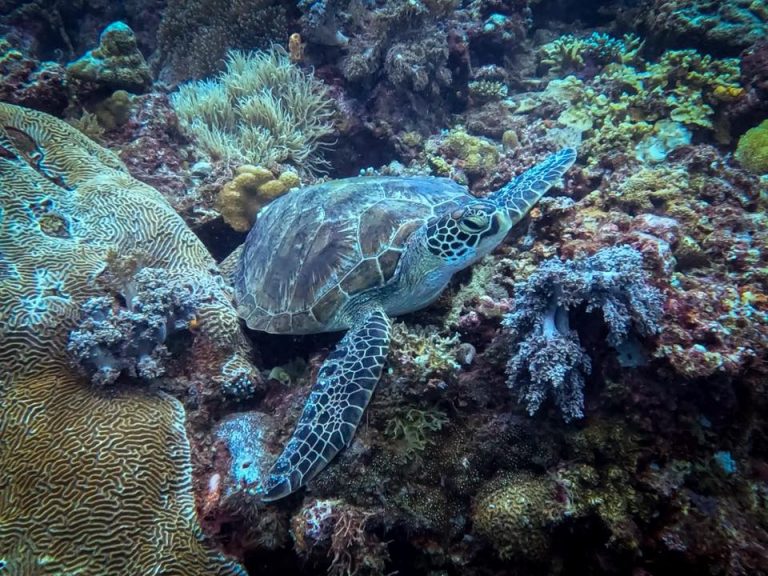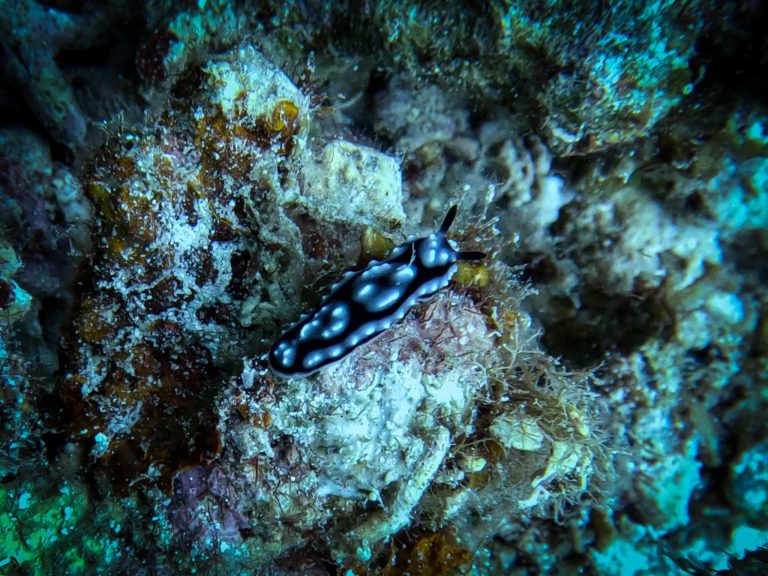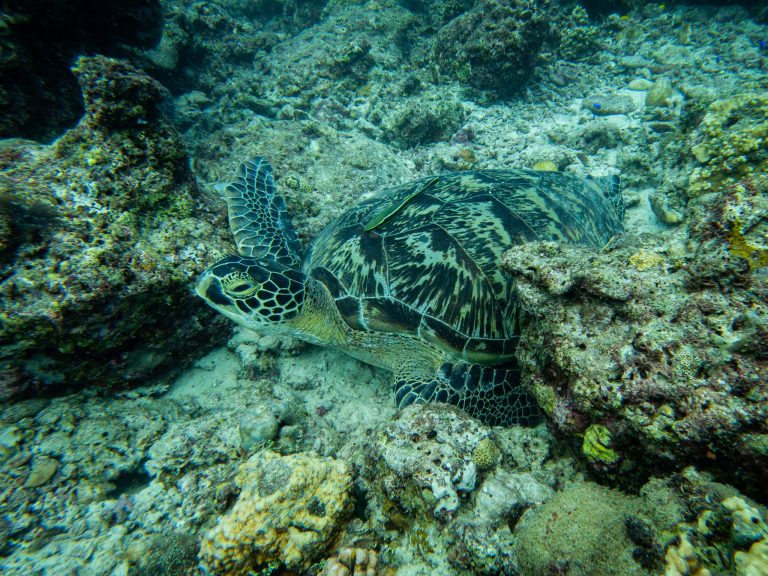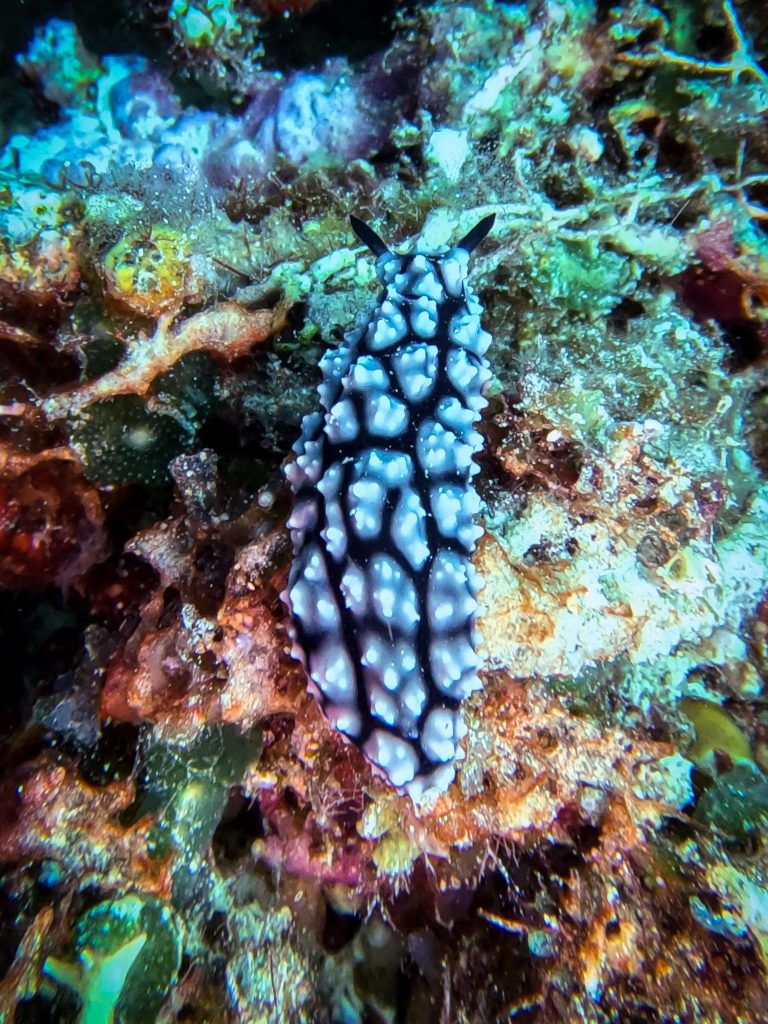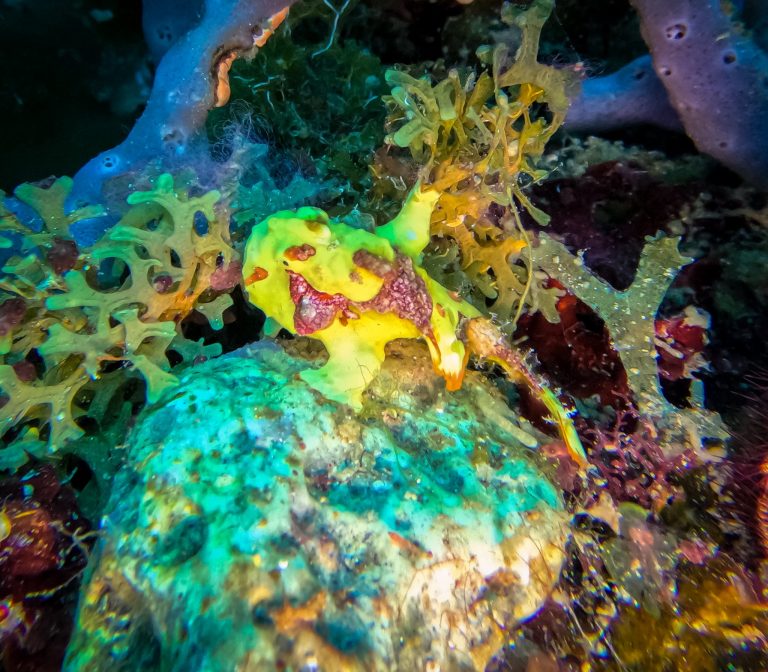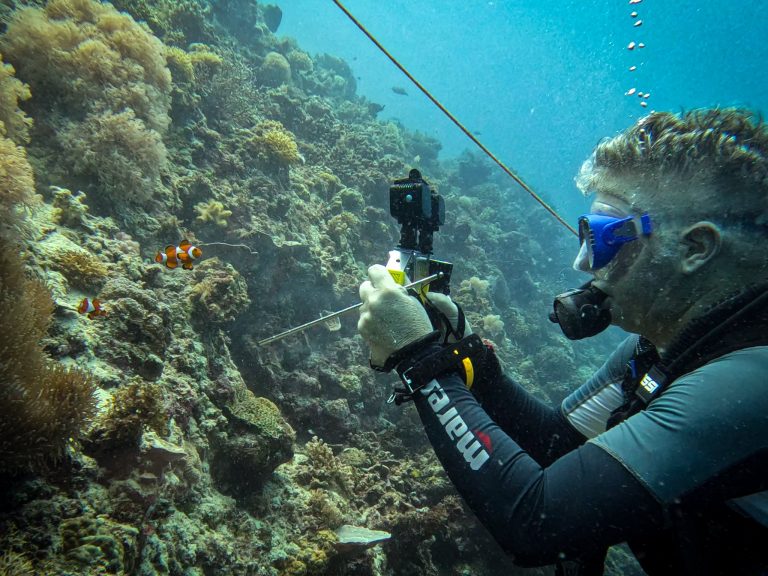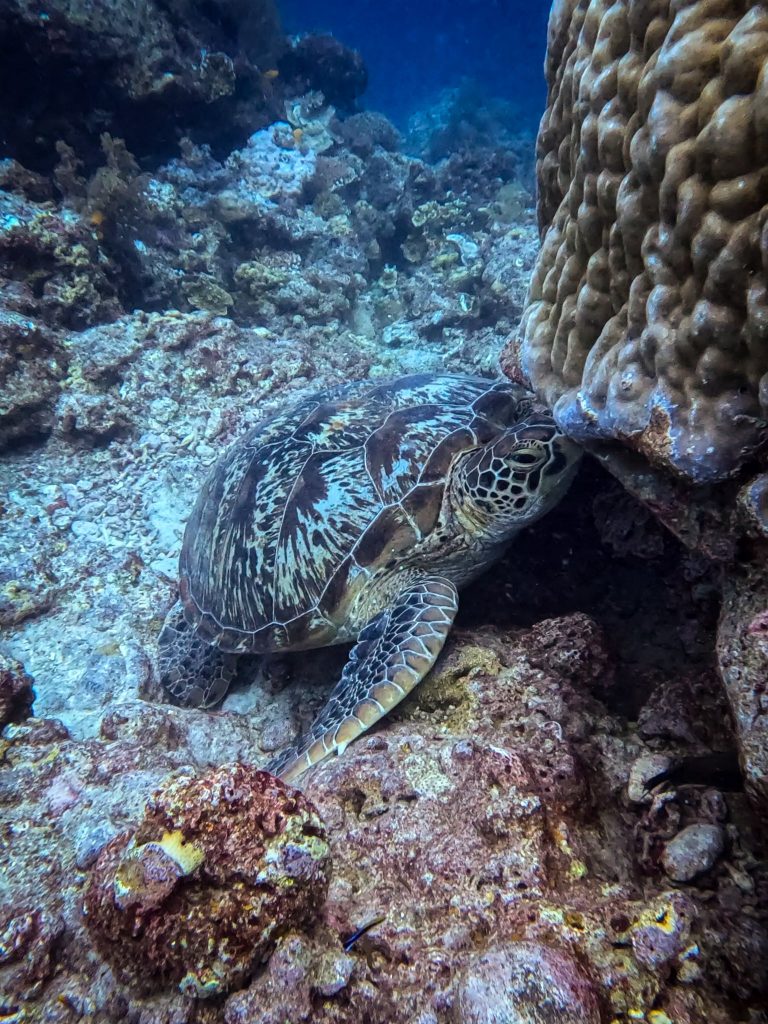
Home » Scuba Diving Destinations » Scuba Diving at Oslob, The Philippines
After leaving Dauin at the end of April, the next stop on my Philippines diving adventure in May 2025 was Oslob. This small coastal town in southern Cebu has become world-famous for one unforgettable reason, the chance to dive with whale sharks, the largest fish in the ocean.
Scuba diving in Oslob is about more than just whale sharks though. The warm, clear waters here are home to several excellent dive sites along the coast. Among them is Sumilon Island, known for its drift dives, colourful coral, and schools of fish. With calm conditions, thirty-metre visibility, and an abundance of marine life, Oslob offers something for everyone, from beginners to seasoned divers.
Getting to Oslob from Dauin was straightforward. We left from the port at Sibulan in Dumaguete and took the fast passenger ferry across to Liloan on Cebu Island. The crossing only takes around twenty-five minutes and is much quicker than the car ferry.
There’s no need to book in advance. We simply arrived at the terminal and bought tickets on the day. Once we reached Liloan, the dive school, which also ran the accommodation we had booked, picked us up for the short ten-minute drive to Whale Shark Dive Camp. It was an easy, smooth journey that meant we could settle in and relax before diving the next morning.
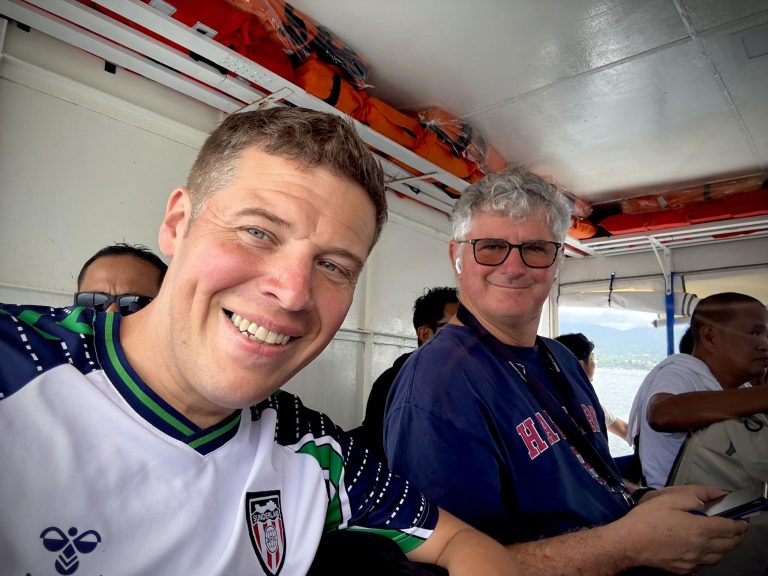
I booked my diving with Deepzone Dive Centre, who also operate Whale Shark Dive Camp, their own accommodation just outside Oslob. It turned out to be a fantastic choice. The camp is tucked away from the main road, giving it a peaceful and private feel. Our room was large, air-conditioned, and had a balcony overlooking the sea. It was the perfect spot to start each day.
The camp has its own small beach that’s ideal for an afternoon snorkel, while the main dive shop sits in town, about seven minutes away by car. Each morning, the team arranged our transport to and from the dive centre, keeping everything simple and stress-free.
Staying at the camp was a great decision. The town quietens down after lunch when most day trippers leave, so evenings there can feel flat. The camp gave us the best of both worlds, quiet surroundings with easy access to the diving.
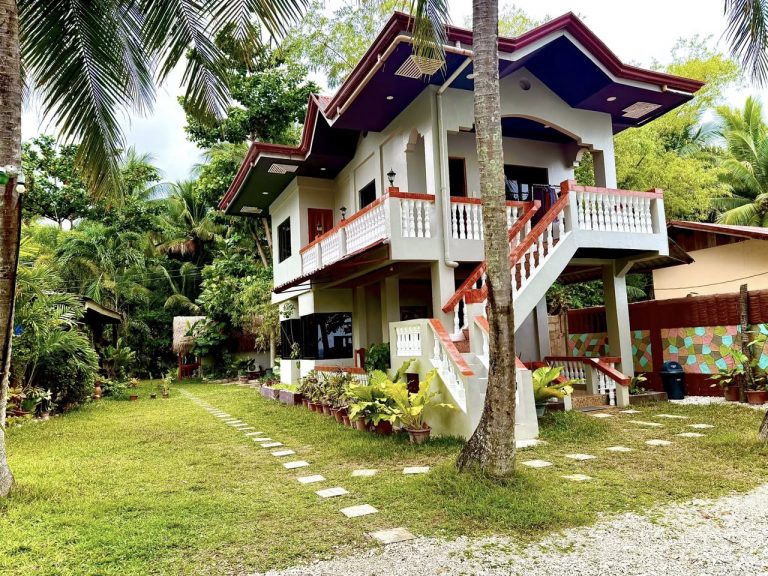

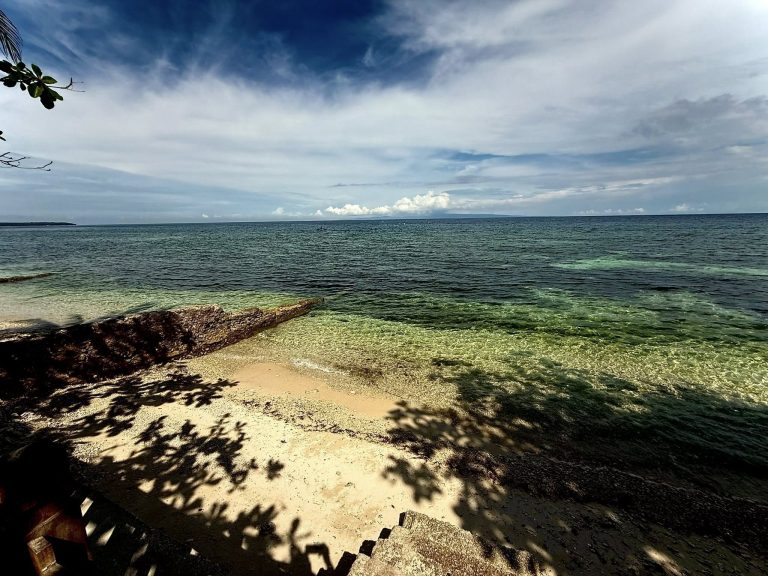
The staff were brilliant from start to finish. Friendly, organised, and genuinely caring, they went out of their way to make our stay comfortable.
There’s a small shop across the road for drinks and snacks and a lovely restaurant nearby called Melba’s Homestyle. It’s perfect for lunch or dinner. If you fancy something more casual, Linda’s RestoBar offers cold beers and a relaxed evening atmosphere which is about a 20 minute walk away.

Our first day focused on the experience Oslob is best known for, diving with whale sharks. The small village of Tan-Awan has gained global fame as the place to see these gentle giants up close, and it’s easy to understand why.
After gearing up at the dive office, conveniently located across from the main tourist area, we walked straight to the beach. This is where being a diver really pays off. While snorkellers queued for their allotted slot, we simply waded in and descended beneath the crowds.
The moment we dropped down, the excitement kicked in. Seeing these enormous, graceful creatures gliding past was incredible. They moved slowly, giving us plenty of time to take it all in.
The whale sharks here are fed by local fishermen, which encourages them to stay in the area rather than following their natural migratory routes. This practice divides opinion. Some believe it provides vital income for the community and helps raise awareness of marine life, while others argue it changes the animals’ natural behaviour.
From what I saw, the whale sharks are not enclosed or trapped, and they appear free to come and go. Still, the snorkelling side of the operation can feel overwhelming, with large crowds and little sense of connection to the sea life. As a diver, being below the surface felt calmer and more respectful, allowing space to observe these incredible animals without adding to the surface chaos.
It’s an unforgettable experience, but one that makes you think about the balance between tourism, conservation and the natural world. If you choose to visit, it’s worth reading up on the ethical debate beforehand so you can make an informed decision.
The next day, we explored Sumilon Island, just offshore from Oslob. As always, the team picked us up from the camp and drove us to the dive boat. It was large, clean, and comfortable, with plenty of space for gear and even a toilet on board. That made for a relaxed start to the day.
Sumilon Island is well-known for its drift dives and healthy coral reefs. We did two dives here and both were excellent. Huge schools of jackfish swirled around us as we drifted past coral slopes filled with life. We also spotted barracuda in the blue, a few blacktip reef sharks, and a pair of giant napoleon wrasse cruising by.
The first dive was full of action, but the second one allowed us to slow down and focus on smaller details. The corals were in great condition, and turtles were everywhere.
We did have one funny moment when a couple of Titan Triggerfish decided we were too close to their nests. They chased us off with surprising determination. It definitely got the heart rate up, but it made for a good story later.
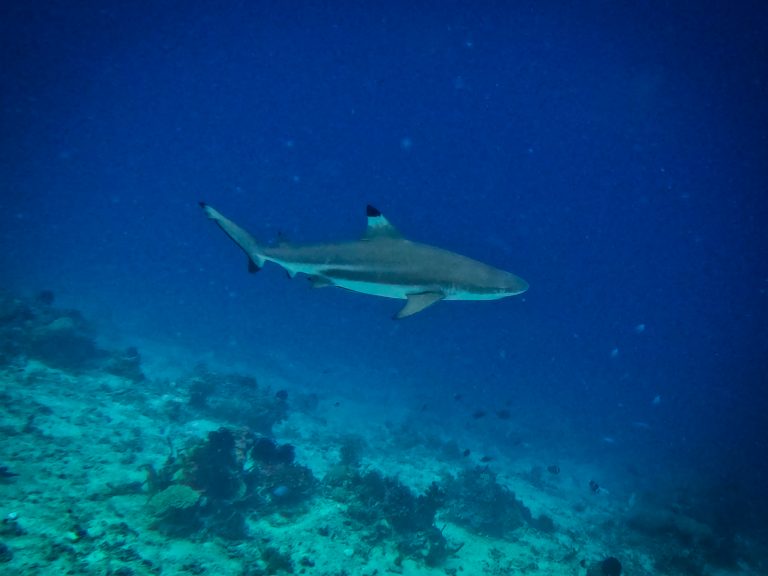
Sumilon Island really does offer something for everyone. The visibility was excellent, the current gentle, and the water warm. It’s a perfect mix of big fish, relaxed reefs, and colourful coral.
Even as someone who enjoys macro photography, I loved the open reef dives here. They were easy, calm, and full of life. It was a great change of pace after the excitement of Oslob’s whale sharks.
After a few incredible days, it was time to move on. Diving with whale sharks, exploring Sumilon’s reefs, and relaxing at Whale Shark Dive Camp made Oslob a highlight of my Philippines trip.
The Deepzone Dive Centre team even drove us to Oslob Port for our onward ferry. Next stop, the island of Bohol and the laid-back coastal town of Anda.
Here are a few shots from my dives around Oslob, including the unforgettable whale sharks and the vibrant reefs of Sumilon Island. These were taken using a GoPro. I’ve since upgraded my camera setup and can’t wait to return to capture more.

